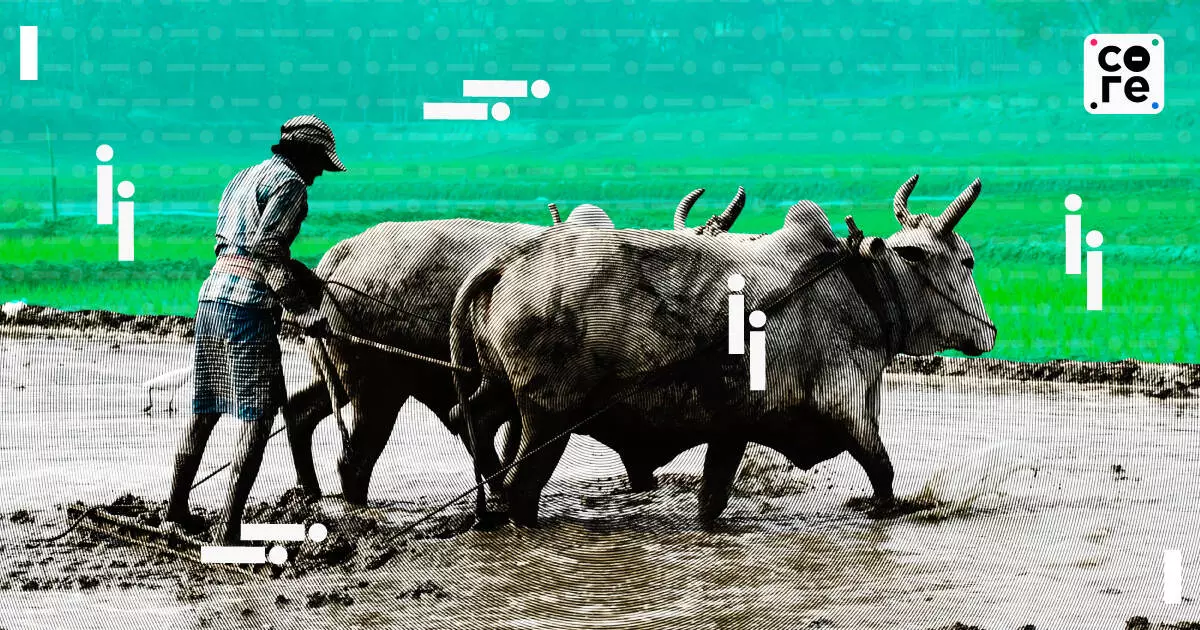
CRISIL Predicts Growth Relief From Monsoons, Scope For Rate Cuts
Rural revival gains steam, but global risks to private capex still loom.

Even as tariff uncertainty weighs heavily on the markets, some good news has come from another uncertain factor that affects our economy — monsoons. The Indian Meteorological Department (IMD) predicts above-average monsoon rains in 2025, and that’s key for keeping food inflation under control. It gives leeway for flexibility in monetary policy decisions.
“I think we see two rate cuts happening in the rest of the fiscal year, and that's because inflation is nudging down. We expect headline inflation somewhere around 3% (for May), so that's pretty soft,” said Dharmakirti Joshi, chief economist at rating agency CRISIL.
Ruby Indicators Of Advanced Estimates
In 2025, the central bank’s Monetary Policy Committee (MPC) cut interest rates twice, by 25 basis points twice, bringing the base rate down to 6%. It also changed its stance from neutral to accommodative, providing relief long after the market had been waiting for it.
This easing, in addition to lowered inflation, can aid consumption in the economy.
“Low food inflation is specifically good since it has a very large weight in the consumption basket. It eats into your discretionary spending ability,” said Joshi. Agricultural production also makes up for 18% of the GDP and can also push up rural consumption which has also been showing signs of revival.
The market also expects healthy wheat as well as pulses production this year. These are “the ruby indicators from the second advance estimates”. Food inflation, which makes up for around 46% of total retail inflation, was strong last fiscal year due to extremely high vegetable prices.
“I think we have become more resilient in some of the crops like rice, wheat, etc, because of new varieties. But the frequency of these weather shocks also increased, while we become more resilient. So it's an interplay of both these that determines, but for this year I think the tidings are happy, I mean so far,” said Joshi.
The good news on the agricultural front comes on the back of softer growth in consumption. The Q4 of FY25, FMCG volume growth came in at 5.1%, as per Nielsen data. Rural demand came in much higher at 8.4%, while urban volume growth came at 2.6%.
However, experts point out that the stimuli provided via Income Tax relief — removing tax liability for those earning over Rs 12 lakh per annum — is yet to trickle down into the market. When it does, it can aid urban consumption growth as well, or at least maintain its momentum.
Private Capex To Remain Muted
As the silver lining has turned a little brighter, clouds do exist on the macroeconomic front, in the form of US tariffs. India, as well as others, will face both direct and indirect impacts of these tariffs.
“Direct impact is, of course, linkages with the US, but indirect impact is collateral damage. Economies like China or others might start dumping, of which I think there is some indication,” said Joshi.
On the other hand, however, the Indian economy has buffers in the form of benign external debt, low current account deficit and reasonably healthy forex reserves. This year, the government too is expected to give the economy a stronger nudge with higher capex spending. In 2024, with state as well as general elections, spending has been muted, which is expected to recover this year. Joshi expects public capex spending to be higher by 10%.
As an indirect impact of US tariffs, private capex is expected to remain muted as it has for the last two years. FDI inflows have not been very strong for the last couple of years.
“Private capex has not picked up in line with the healthy balance sheets and financial flexibility that the corporates enjoy. Increased uncertainty has now made it even more difficult to make a decision on investments. For instance, fear of dumping means you don't know how much competition will be there,” Joshi said.
Here too, there is a slight cause for optimism. The tariff regime may cause some supply chain shifts. Tech major Apple has already announced that its iPhones will be manufactured in India, and India could gain from other such decisions. India has been working on positioning it as a China+1 supplier strategy of global companies, and it might finally start seeing some effect. To gain most from it, Indian manufacturers must step up beyond assembly with backward integration, adds Joshi.
In all, the Indian economy has a large mixed bag of indicators which will unravel slowly yet clearly over the course of the year. CRISIL predicts that the Indian economy will grow at 6.5% in FY26.
Rural revival gains steam, but global risks to private capex still loom.
Rural revival gains steam, but global risks to private capex still loom.

